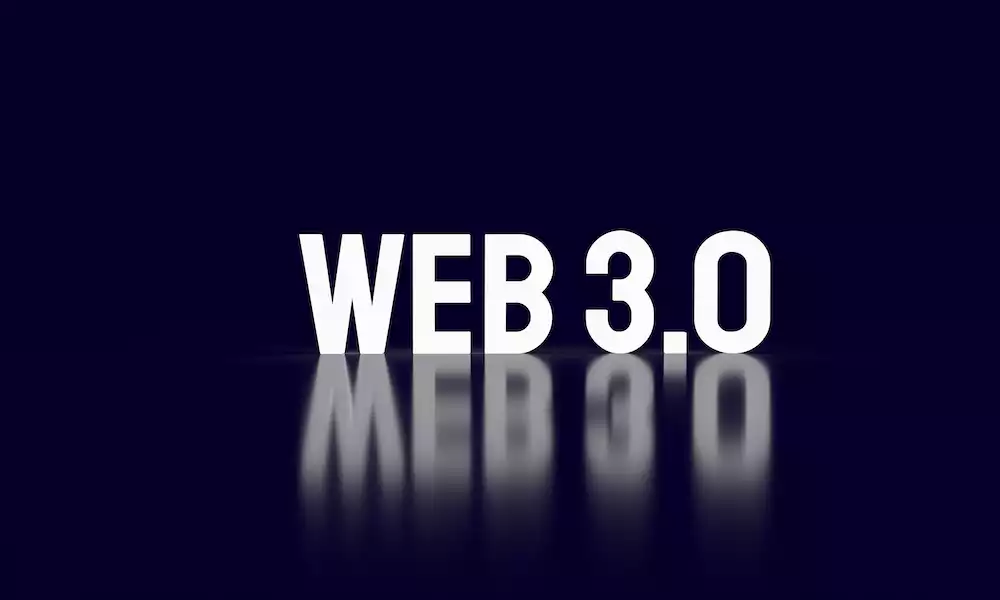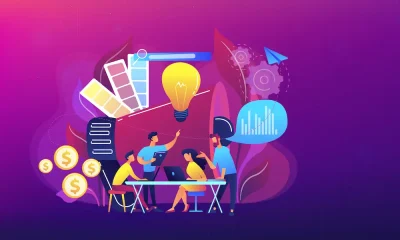Marketing
The Ultimate Marketers Guide To Understanding Web 3.0

Web 3.0 is the future of the Internet, and it’s vital for marketers to understand its potential.
We know that Web 3.0 is the next evolution of the Internet, and it’s poised to revolutionize how we interact with technology and customers.
As a marketer, it’s essential to understand what Web 3.0 is and how it will impact your industry.
Plus, now is the time to know how you are preparing to move to Web 3.0 so you can outperform your peers and get more conversions for your clients or employer.
Let’s start by exploring the basics of Web 1, 2, and Web 3.0, as well as looking at potential uses and opportunities for marketers.
What is Web 3.0?
Web 3.0, also known as the Semantic Web, is the next generation of the Internet. It’s characterized by a more intelligent, connected, and personalized web experience.
Web 3.0 is built on the foundation of Web 2.0, which introduced user-generated content, social media, and mobile devices.
However, Web 3.0 takes this a step further by incorporating artificial intelligence, machine learning, and blockchain technology to create a more seamless and secure online experience. But that’s not all; there are new experiences and opportunities for marketers with Web3 which we cover after a quick overview of how it’s progressed from Web 2.0.
How is Web 3.0 different from Web 2.0?
Web 3.0 differs from Web 2.0 in several ways, but how did we get here?
Web 1.0
Web 1.0 was about static websites providing one-way communication, limited interactivity, and lacking user-generated content. However, we must be grateful for Web 1.0 as it was a foundational phase of the Internet, focusing on information dissemination and establishing the infrastructure for the subsequent advancements in Web 2.0 and beyond.
Web 2.0
Web 2.0 introduced user-generated content and social media. Sites like Facebook, Twitter, TikTok, and Instagram have explored with users’ photos, videos, comments, blogs, and articles and with it engaging followers. Businesses and their marketers have created communities and used interactive content like quizzes, games, and surveys to personalize marketing campaigns.
Web 3.0
Web 3.0 takes this engagement and experience further by incorporating artificial intelligence, machine learning, and blockchain technology.
Emerging technologies
The overriding term encompassing artificial intelligence, machine learning, and blockchain technology is “emerging technologies” or “advanced technologies.” These terms describe the cutting-edge fields of technology that are rapidly developing and transforming various industries.
With emerging technologies, Web3 is more intelligent and connected and provides a heightened personalized web experience than its predecessor.
Privacy, security
Additionally, Web 3.0 is focused on creating a more seamless and secure online experience, emphasizing privacy and data ownership. Overall, Web 3.0 represents a significant shift in the way we interact with the Internet, and it’s important for marketers to understand its potential.
What are the benefits of Web 3.0 for marketers?
Personalized and Targeted
Web 3.0 offers several benefits for marketers, including the ability to create more personalized and targeted marketing campaigns.
With the use of artificial intelligence and machine learning, marketers can better understand their audience and deliver more relevant content.
Additionally, blockchain technology, which is decentralized, can provide greater transparency and security in advertising, reducing the risk of fraud and improving trust between advertisers and consumers.
Transparency
What Web 3.0 does is remove the need for interference by central authorities yet allow users greater control over their data.
Customers have more confidence and control over their personal data; they know who has it, how they got it, and what it is used for – this is called transparency. It’s achieved via peer-to-peer interactions without the involvement of third parties.
Examples of Web 3.0
Marketers can leverage Web3 technologies to engage more effectively with customers in various ways.
- NFTs and Digital Collectibles
- Gamification and Rewards
NFTs and Digital Collectibles
Non-fungible tokens (NFTs) enable creating and trading unique digital assets. Marketers can create limited edition digital collectibles, such as virtual trading cards or exclusive in-game items, to engage customers. These digital collectibles can be used for loyalty programs, giveaways, or as incentives for engagement, creating a sense of exclusivity and fostering customer loyalty.
Gamification and Rewards
Web3 allows for the integration of blockchain-based rewards systems and gamification elements into marketing campaigns.
Marketers can incentivize customer engagement by offering tokens or rewards for specific actions, such as sharing content, providing feedback, or participating in community activities.
We know customers love rewards, which encourage customer participation and build a vibrant and active user community. Your customers will replay your generosity by sharing your marketing campaigns with their followers and thus providing you with a ready-made referral network.
Overall, Web 3.0 presents exciting opportunities for marketers to create more effective and engaging campaigns.
Preparing For Web 3.0
How can marketers prepare for the shift to Web 3.0?
To prepare for the shift to Web 3.0, marketers should start by educating themselves on the technology and its potential to create more engaging marketing campaigns. This includes understanding:
- Decentralized Technologies like blockchain
- Smart Contracts – and DeFi (decentralized finance)
- Tokenization – digital tokens are ownership of verifiable digital assets like NFTs (artwork, real estate, etc.)
- Cryptography – only a basic understanding of how privacy and security are achieved
Plus, marketers need to understand how they can leverage AI in marketing and machine learning. Marketers should also start experimenting with new tools and platforms that leverage Web 3.0 technology, such as decentralized marketplaces and social networks.
Finally, it’s crucial for marketers to stay up-to-date on industry developments and trends, as Web 3.0 is still in its early stages and is likely to evolve rapidly in the coming years.
Summing Up
The future of Web3 technologies is exciting for marketers. It offers new ways to engage with customers and leverage the principles of decentralization, tokenization, and enhanced privacy.
By embracing Web 3.0 technologies, marketers can create immersive experiences, say in the metaverse, foster customer loyalty, and build trust in an increasingly digital and interconnected world.









